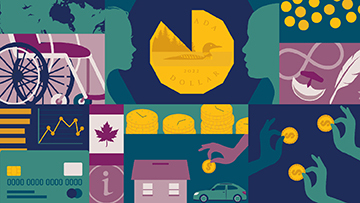Spotlight on
Services and information
Wage Earner Protection Program
Receive possible payment of outstanding eligible wages if your employer is bankrupt or in receivership.
File a labour standards complaint
Monetary complaints for unpaid wages or other amounts; unjust dismissal; genetic testing and more.
Equality and inclusion
Rights and responsibilities related to workplace equality in the federal jurisdiction.
Federal labour relations
Collective bargaining process, dispute prevention programs, training workshops and arbitration appointments.
Submit your annual health and safety reports
Employers must submit annual reports to the Labour Program. Know how to complete and submit your reports.
Collective bargaining
Access customized information on industrial relations and collective bargaining.
Federal Workers' Compensation Service
For federal government employees and their survivors, locally engaged employees, federal inmates, and merchant seamen.
Administrative monetary penalties
A fine to encourage employers to comply with labour standards and workplace health and safety laws.
Hire student interns
Steps for employers who are federally regulated and want to hire student interns.
Negotech Search
Access the full text of the collective agreements, important benefit changes and latest wage adjustments.
International affairs
Internationally recognized labour standards and forums, and negotiating labour cooperation agreements.
About the Labour Program
Minister and Secretary of State

The Honourable Patty Hajdu
Minister of Jobs and Families

The Honourable John Zerucelli
Secretary of State (Labour)
Features

Explore Equi’Vision!
Access data on workplace representation and pay gaps for the 4 designated groups in federally regulated private-sector workplaces.
